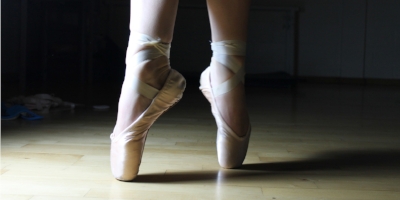I began my journey into dance as a four year old child. My mother (aleha l’shalom) enrolled me in my first class at a studio due to my shyness. It eventually brought me out of my shell. For eight consecutive years, I trained in ballet, toe, tap, twirling, and jazz. I performed in the studio’s end-of- year recitals with full makeup and costume changes. As a member of the dance troupe, I also performed at other venues, such as nursing home facilities. I realized as I got older that dance was a passion, not just a hobby.
The advantages of dance are numerous, and can be beneficial at any age. Dancing boosts confidence, and also helps with poise, posture, and balance. The movements offer aerobic benefits, such as boosting heart health, helping with weight loss, and increasing metabolism. A person can burn a few hundred calories in an hour long class. This number depends on the weight of the individual and the intensity of the movement routine. As you build more muscle in your body, you burn even more calories even while in a resting state. Dancing can reduce cholesterol and lower blood pressure as well.
As a person ages, the brain shrinks and memory begins to grow fuzzy. Scientists at the University of Illinois found that exercise increases the volume of the hippocampus, the area of the brain that helps sort and store new information. So not only does dancing preserve your physical wellbeing, but it has proven neurological benefits as well.
Practicing flexibility allows the muscles that support your bones and joints to be supple and bend instead of tearing or breaking. You build up muscle endurance as you continue on a regular basis. This will boost your overall energy on and off the dance floor.
There are so many genres of dance classes to choose from. As an adult, I took classes in modern, international, and simcha dancing. When choosing a class, you should consider the space and floor where it is given. Hardwood floor is one of the best possible choices. Another good choice in many studios are vinyl floors made for this purpose. Either option provides support against fatigue and impact. This will ensure that you protect your feet, knees, and lower back. It is not recommended to dance on carpet or tiled floors as they do not provide the same type of protection. Mirrors in the studio also provide the opportunity to see if you are using proper form.
Dancing engages you physically and mentally. You learn the steps from the instructor and then memorize whole choreography. Moving all four limbs is an ideal activity and can also be a great social outlet.
It is always exciting to challenge yourself and learn new things. Being in tune with your body is an added bonus. I teach group and private classes to women and mature teens. I have found that anyone can learn how to dance with the proper attitude. When starting any new activity, it is very important to not psyche yourself out. You can grow quickly with an “I think I can” attitude.
It is necessary to stretch and warm up at the beginning of class as this will prevent injury. Wearing proper attire to allow for movement is best. Of course, appropriate footwear is a must. While participating in a dance class, it is very important to hydrate so be sure to bring a water bottle with you. It is also crucial to tell your instructor if you have any injuries. This will allow the teacher to modify steps for you if needed.
There is also class etiquette to be aware of. Make sure there is enough room around you when you pick a spot on the floor so you will not hit or kick other classmates.
Many people can get bored doing the same exercise every day. You can find yourself checking the clock too often. I used to feel this way years ago when I used to do the treadmill. When dancing, you will be surprised how quickly the time goes by.
Dance has its roots in many cultures throughout the world, including Judaism. It has been depicted in ancient art and was performed for rituals and ceremonies. In the Bible, Miriam led the women in dance across the Sea of Reeds as an expression of joy and worship. It is also a mitzva to dance for the bride and groom at their wedding. Even many secular Jews still include a traditional hora set at their weddings. Chasidism, which was founded in the 18th century, initially connected to G-d through song and dance. The Baal Shem Tov (the founder of Chasidism) would dance in circles with his followers, singing niggunim (wordless melodies). This is still done today in Chasidic communities throughout the world. Israeli folk dancing began in the late 19th and early 20th centuries in the land of Israel and became important to many immigrants, solidifying itself as a national pastime.
Women come in all shapes and sizes. It is important to embrace what you have and work with it. We must do our part to stay healthy. Making a commitment to move our bodies can lead us to this goal. If you don’t make it a priority, it will not happen. Women tend to leave themselves last on the totem pole. Dance can be a stress reducer, improve your mood, and make you happy. It is wise to take the time for yourself; everyone around you will see the difference, both physically and emotionally.
Dancing is really an innate activity. Turn on music and watch toddlers’ reactions. They sway, clap, and move their feet. They are not self conscious. It is always fun. As we get older, we are concerned about other people looking at us. We need to learn from children – clear your mind and just go for it!











